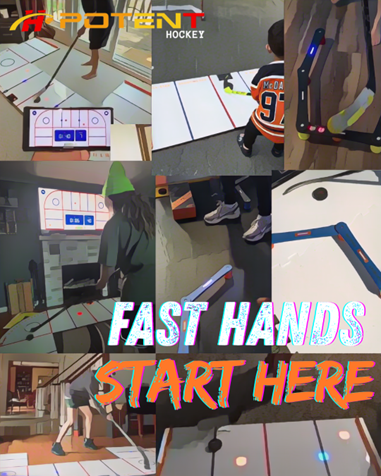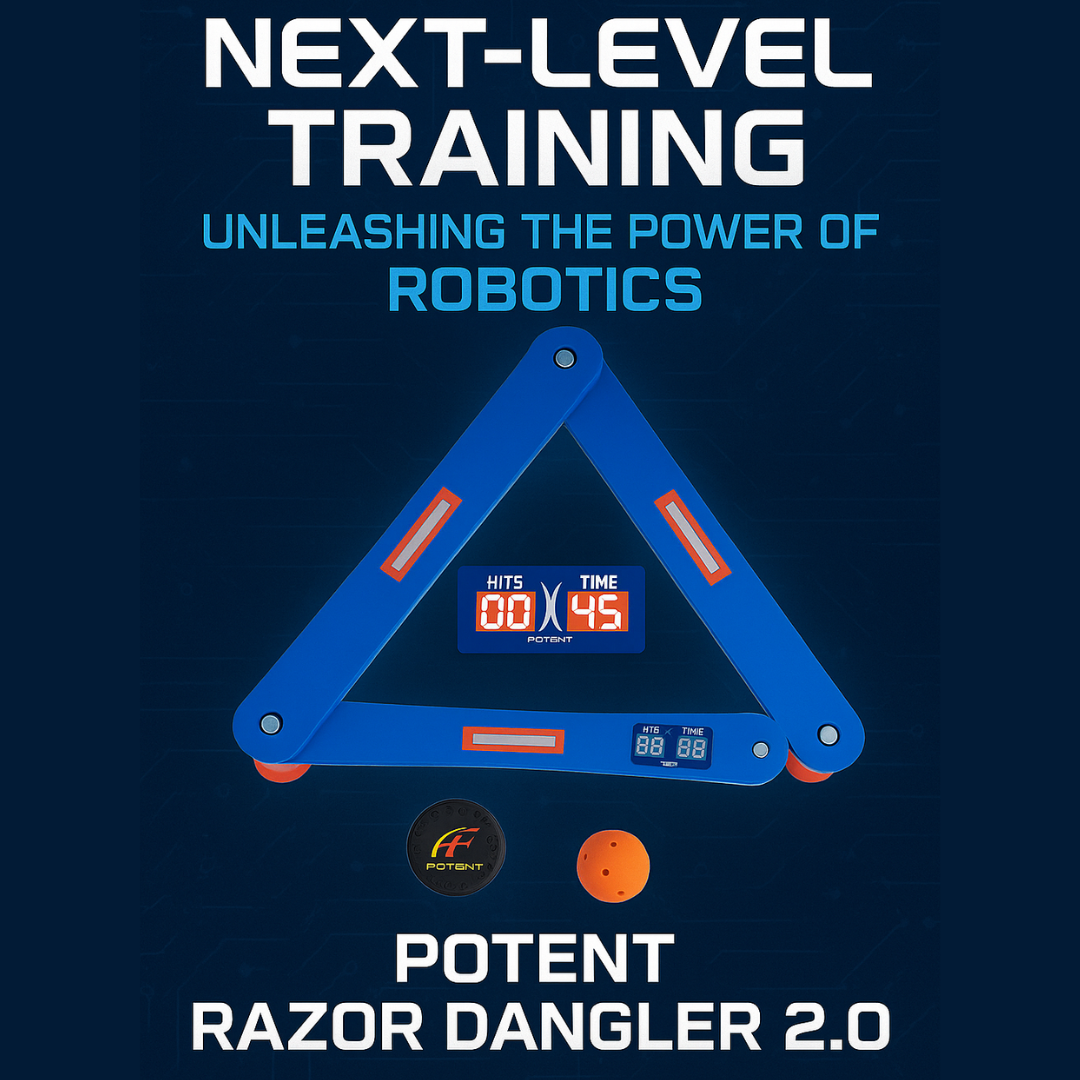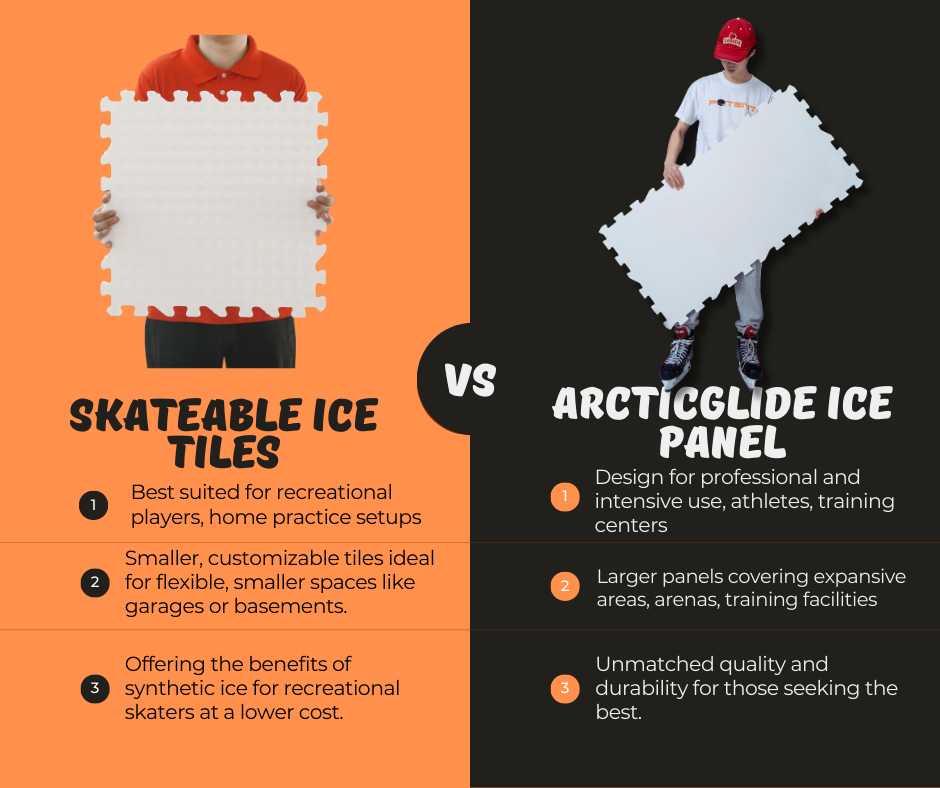How to Set Hockey Goals That Actually Stick This Season

Every hockey player wants to level up their game — whether it’s skating faster, shooting harder, or finally mastering that slick toe drag. But setting goals that actually stick? That’s where many players fall short. The difference between wishing for improvement and achieving it lies in how you approach your goals.
With a new season in full swing, now’s the perfect time to reset your focus, redefine what success looks like, and set goals that will carry you through to your best season yet.
Let’s break down how to create hockey goals that motivate you, keep you accountable, and translate into real results on the ice.
1. Focus on Process, Not Just Outcome
It’s easy to set goals like “score more goals” or “make the top line.” But outcome goals are only half the story — they’re the result of the hard work you put in. The problem is that they’re often outside your direct control. Without a clear plan of how you will reach this goal, many of these will be left unattained.
Instead, shift your mindset toward process goals — the daily or weekly actions that move you closer to those big outcomes. Working towards building habits that will help you achieve your goals creates more opportunity to achieve those goals.
For example:
-
❌ Outcome goal: “Increase my shot speed by 10 mph.”
-
✅ Process goal: “Take 50 quality shots after every practice.”
The outcome depends on many variables, but the process is entirely up to you. Over time, the consistency compounds — and that’s where the magic happens.
To make this process even stronger, use tools that track your effort. The Potent MySpeedz Radar Gun 2.0, for instance, lets you measure every shot in real time and view your progress in the companion app. When you can see your numbers go up, it’s easier to stay committed to the grind.
2. Set SMART Goals (Seriously, It Works)
You’ve probably heard of SMART goals before — but applying them to your hockey training can make a huge difference.
SMART stands for:
-
Specific: What exactly are you trying to achieve?
-
Measurable: Can you track your progress over time?
-
Achievable: Is it realistic given your current ability and schedule?
-
Relevant: Does it connect to your bigger hockey vision?
-
Time-bound: When will you check in or hit your target?
Here’s an example:
“By January 1st, I want to increase my average shot speed by 5 mph. I’ll do this by completing three shooting sessions per week, taking 100 shots per session, and tracking my results using the MySpeedz Radar Gun app.”
That goal is specific, measurable, and actionable. It gives you structure and a clear path forward — instead of vague motivation that fades by the second week.
3. Break Big Goals Into Small Wins
A huge goal can feel motivating — until it becomes overwhelming. The best athletes know how to chunk big goals into smaller, achievable steps.
If your ultimate goal is to make a higher-level team, ask yourself:
-
What specific skills do I need to stand out?
-
What areas of my game need the most attention?
-
What can I improve this month that will move me closer?
For instance, if you’re working on stickhandling, you might start with:
-
Week 1: Master puck control drills with the Digital Stickhandling Trainer.
-
Week 2: Add dynamic movement and footwork.
-
Week 3: Increase speed and reaction time using the DangleElite app for guided progressions.
By stacking small wins, you create momentum — and that momentum builds confidence.
4. Make Accountability Part of the Plan
Even the best training plans can fall apart without accountability. Find ways to keep yourself honest and motivated.
A few ideas:
-
Track your data: Use tools like the MySpeedz app or a training journal to record sessions.
-
Share your goals: Tell a coach, parent, or teammate what you’re working toward.
-
Create consistency cues: Schedule training sessions at the same time each week or set reminders in your phone.
Accountability turns goals into habits — and habits into performance. If you skip a session, it’s not about guilt; it’s about noticing the pattern and getting back on track. It’s okay to take a break every once in a while, but it’s necessary to keep yourself accountable in order to stay on track.
5. Use Feedback to Adjust, Not Quit
Progress isn’t always linear. Some weeks you’ll feel unstoppable — others, not so much. That’s normal. The key is learning to adapt without giving up.
If your results aren’t improving as quickly as expected:
-
Review your training volume and intensity — are you overtraining or not doing enough?
-
Look at your mechanics — small adjustments can make huge differences.
-
Analyze your data trends — for example, use the MySpeedz Radar Gun app to see if your shot speed plateaus and when it happens.
Every bit of feedback, whether it’s from a coach or your own tracking, helps you refine your approach. The best players treat feedback as fuel, not failure.
6. Celebrate Progress Along the Way
Motivation thrives on recognition. Celebrate the small wins:
-
Your first 5 mph increase in shot speed.
-
Your fastest stickhandling drill time.
-
Completing a month of consistent off-ice training.
Recognizing milestones keeps you emotionally invested in your goals — and that emotional connection is what keeps players grinding through long seasons and tough practices.
Potent Hockey’s connected tools are designed for exactly this — helping players see their progress, not just feel it. Whether it’s shooting faster, reacting quicker, or skating with better control, every measurable improvement matters.
7. Revisit and Reset Regularly
Goal-setting isn’t a one-and-done exercise. The best athletes check in on their goals every few weeks and adjust based on where they are now.
Ask yourself:
-
What’s working?
-
What’s not?
-
What needs to change?
If you’ve already hit your target, set a new one that pushes your ceiling higher. If you’re struggling, adjust your approach — not your ambition.
A quick monthly review can help you stay aligned and inspired. Over time, these check-ins become part of your hockey rhythm — as routine as taping your stick.
Final Thoughts: Make This Season Count
Setting goals isn’t just about achieving them — it’s about building discipline, resilience, and focus along the way. The players who reach the next level aren’t just talented; they’re intentional. They show up with a plan, track their progress, and stay accountable to themselves.
This season, commit to goals that are clear, measurable, and meaningful. Write them down. Track them. Celebrate them.
And when you’re ready to measure your growth, tools like the Potent MySpeedz Radar Gun 2.0 and DangleElite-connected trainers can help turn your training data into motivation you can see.
Because progress isn’t just something you feel — it’s something you can measure.
Ready to set your next goal?
Explore Potent Hockey’s full lineup of connected training tools and start tracking your journey to becoming the player you’re meant to be.




